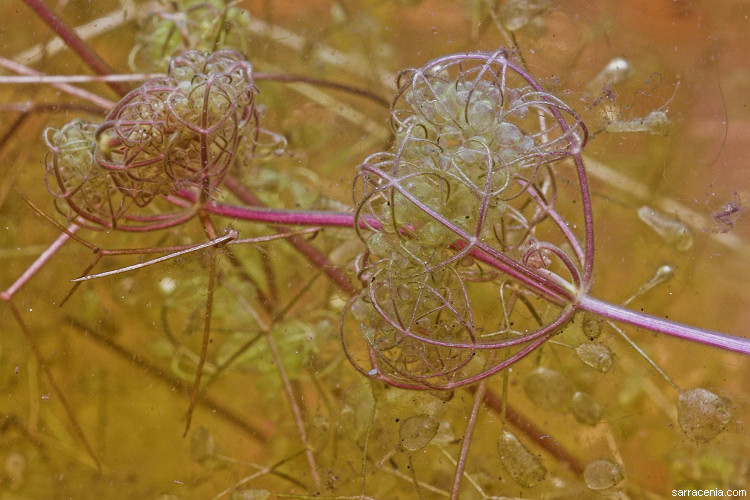
An aquatic diversion:
Mike had a very interesting trip planned for our next day. We were to canoe down a quiet river to a site where we should be
able to find Utricularia purpurea. I had requested such a trip because, while I have seen U. purpurea
many times in the past, I never tried to photograph its aquatic shoots. This time I was prepared with appropriate
aquatic photographic gear.
Joining us would be Michael Pagoulatos. I knew Michael only from his internet
presence--he was quite outspoken and did not shy away from controversial statements if he felt he was correct. In short,
his presence on listserves often created fire, so I thought he would be an interesting addition to our small
entourage. I also hoped all three of us would still be alive by the end of the day!
We all met with our outfitter at our put-in point on the river's edge (Mike didn't have a
second canoe), and readied our gear. Soon we were paddling down the glassy waters; Mike in one canoe, and Michael and I
sharing a second. Michael and I had plenty of time to chat and get to know each other some. I discovered that he was one of
those people who is honest, straightforward, and who does not sugar-coat his thoughts. He may not be to everyone's taste, but
neither by any means am I, so we got along quite well. He has a number of fascinating hobbies and side-businesses, and
conversation with him was enthralling. He is the driving force behind an organization that works on natural area delineation,
exploration, and inventory, called "Carnivorous Plants of Texas" (google it).
In time, Mike directed us to land our canoes, hide them from thieves, and continue on foot. We trudged along a railroad track for a bit,
and sooner than I expected we arrived at a small, acidic lake in the
sandhill forest. The three of us shrugged off our gear and fanned out, each exploring the water's edge in his own way.
Soon we found the common Utricularia gibba, and subsequently U. purpurea in deeper water.
Utricularia purpurea is an interesting plant, as you can see above. Notice that the shoots branch in whorls. Also,
the plants have very little chlorophyll--instead they have a semi-transparent, purplish cast to them. Some have
theorized that U. purpurea uses its traps as a home for photosynthetic organisms, in a vegetarian solution to
obtaining energy!
(See also this image.)